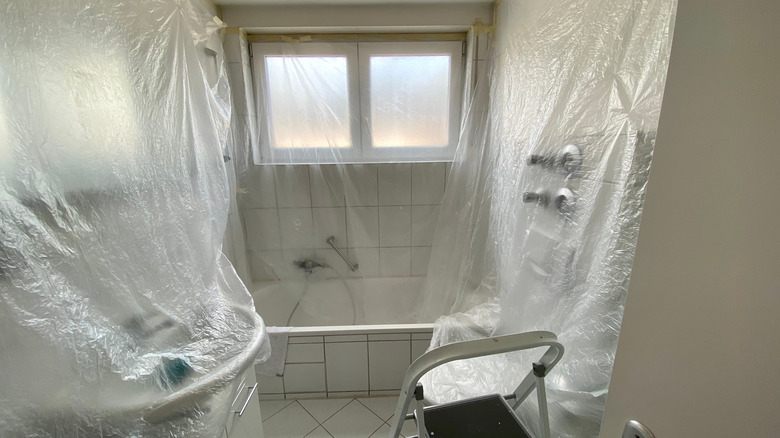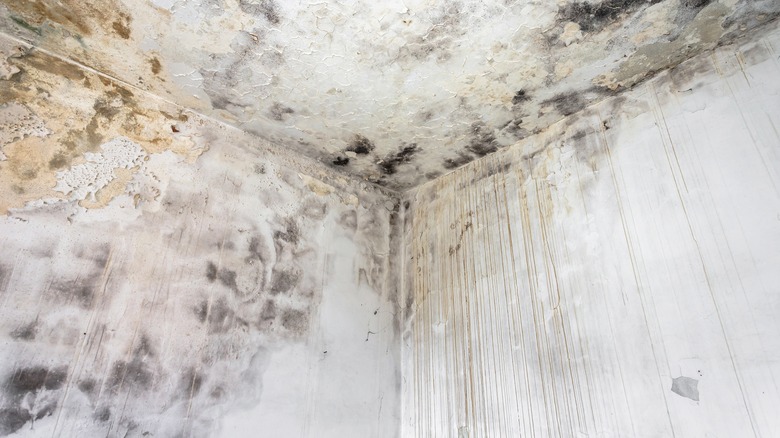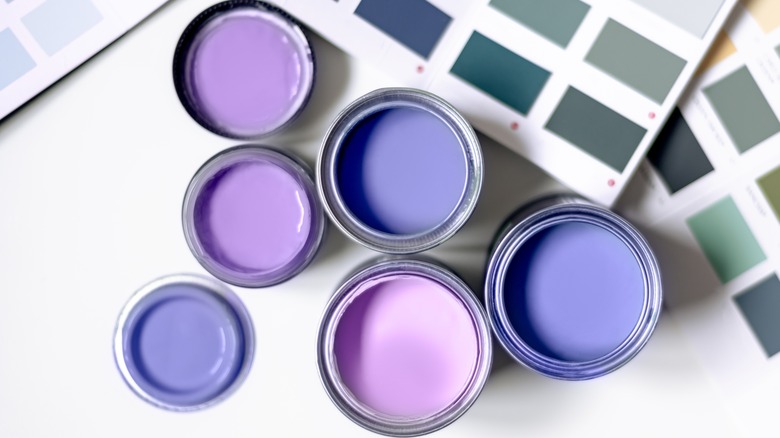The Best Type Of Paint For A Bathroom, According To An Expert
Having just painted the bathroom, few things will make your heart sink faster or blood boil more than seeing your hard work pucker, bubble, peel, run, and streak. In an exclusive interview with House Digest, professional painter Jan Walter explains how best to avoid this calamity simply by using the right paint. He is a blogger at GoColorize, where he dispenses sound advice distilled from 25 years of painting experience.
As you're likely aware, bathrooms are a breeding ground for humidity and moisture, two enemies of a successfully painted room. Decorating this space, but neglecting to use the proper coloring agent, is an invitation to paint failure. In particular, liquid that permeates the space between the surface and the paint coating will cause problems every time. Thus, the key to a bathroom paint job that lasts is making sure everything is water-resistant — and the experts at Consumer Reports agree. Paint color or finish varieties are choices that lend a personal touch. However, they'll be rendered moot if the paint chosen can't withstand the rainforest conditions a bathroom sometimes simulates.
Water-based and more
The veteran painting pro makes this fundamental point: "The best type of paint for a bathroom is a water-based, moisture-resistant latex paint that is also mold- and mildew-resistant." Moreover, water can cause the paint to break down, and mildew will hasten the destructive process. Mold, on the other hand, can progress from being an insignificant spot to potentially damaging a bathroom ceiling or wall to the point where it needs to be replaced.
The proper bathroom paint, something water-based in Walter's opinion, is apt to have other components as well. "The paints that are available for walls and ceilings in a bathroom are usually with acrylic as a binder," Walter explains. Additionally, more vulnerable surfaces surrounding a shower or bathtub require an extra level of protection to maintain a pristine coating of paint. Per Walter, "However, a two-component paint, such as epoxy, should be used for areas that are often exposed to water, such as the shower."
What kind of finish is best?
Walter reiterates using paint that can stand up to the dampness of a bathroom is more important than whether it's matte or glossy. Indeed, the finish won't matter if the paint is crumbling. "The choice of finish is nowadays largely a matter of personal taste, but it's important that the paint you choose is formulated to handle the humidity and moisture in a bathroom environment," he notes. "A semi-gloss is a popular and good option since it's easy to clean and it has a nice shiny finish."
In addition to flat paint, the matte and eggshell varieties were once considered taboo for use in bathrooms. These non-glossy dyes were thought to be more prone to mold and mildew. Walter agrees that "A matte finish wasn't a good choice in the past because it wasn't very durable or easy to clean, and spots and watermarks easily formed. But the technology of paint keeps improving."
In fact, he continues, "A less glossy paint, such as Benjamin Moore's AURA Bath and Spa (which is matte) will work great." The manufacturer touts its signature color-lock technology for ensuring a rich coating that lasts and does not fade. Walter's choice of bathroom paint is effective on both new and previously painted exteriors and is appropriate to apply on a variety of surfaces.


